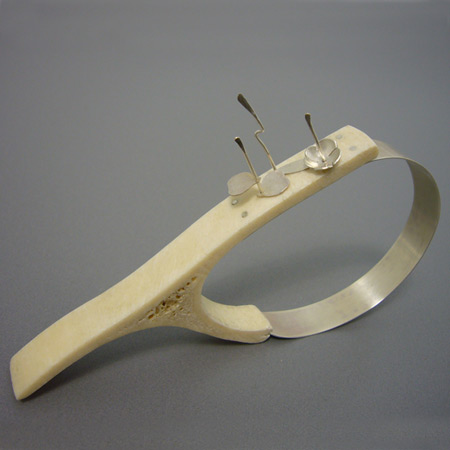New Designers 08: At New Designers in London last week Andrew Ross exhibited a collection of objects made of waste cow bones, which he collected from an abattoir.
The range of possible applications for the material included jewellery (top), containers in which to bury used batteries (above) and casings for disposable electronic products (below). Ross claims that bone is able to neutralise certain toxic chemicals and could allow products to be thrown away without the risk of causing environmental problems.
Ross, a graduate of Dundee University, was awarded the New Designers Swarovski Crystal Palace Award (see our previous story for details of all the award winners).
Cow bones used to be ground up for animal feed but the process was outlawed after the BSE crisis, and now truckloads of bones are thrown away every day.
More from New Designers 08 in our previous stories.
The following information is from Ross:
--
The Bone Project
My initial research explored agricultural by-products. The idea was to give farmers the ability not only to farm food but also to farm products. I desired to create some form of local production, which would be beneficial to both the local environment and the economy.
This research led me to an abattoir where I encountered a strange yet wonderful opportunity to use waste cow bones. I immediately set about the problem by dividing my research between three different areas: perception, properties and fabrication.
Perception: could bone be made as acceptable as red meat or leather?
Properties: does bone possess any useful structural, chemical or electrical properties?
Fabrication: how are bones currently disposed of? Could they be used for high volume applications?
It soon became apparent that bone was not immediately suitable for mass product design. Further work and research would be required to integrate it fully into society. Therefore a range of scenarios was created and sources of further funding were identified. As a collection they become a mainstream material for product applications.

